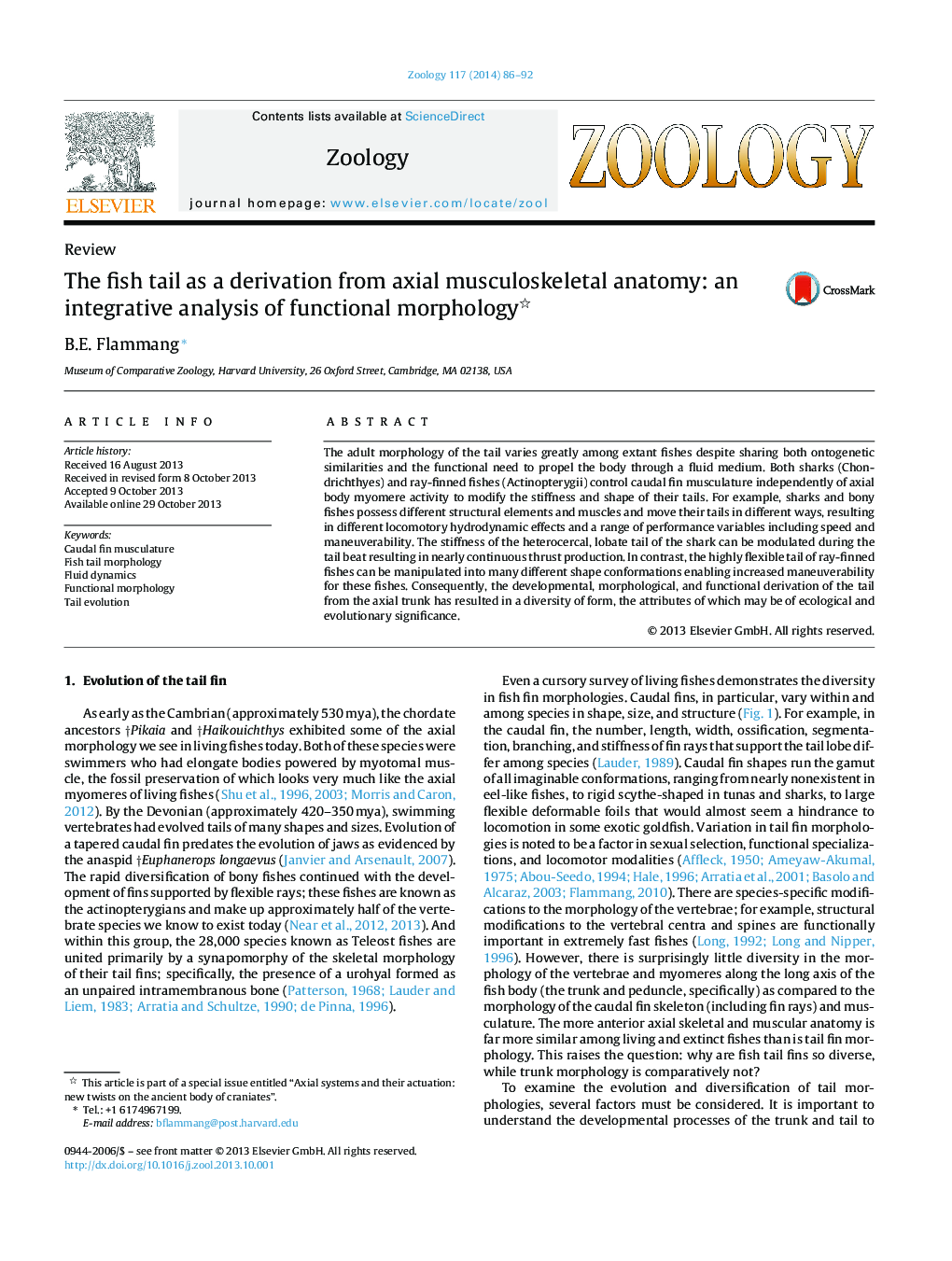| Article ID | Journal | Published Year | Pages | File Type |
|---|---|---|---|---|
| 5896438 | Zoology | 2014 | 7 Pages |
The adult morphology of the tail varies greatly among extant fishes despite sharing both ontogenetic similarities and the functional need to propel the body through a fluid medium. Both sharks (Chondrichthyes) and ray-finned fishes (Actinopterygii) control caudal fin musculature independently of axial body myomere activity to modify the stiffness and shape of their tails. For example, sharks and bony fishes possess different structural elements and muscles and move their tails in different ways, resulting in different locomotory hydrodynamic effects and a range of performance variables including speed and maneuverability. The stiffness of the heterocercal, lobate tail of the shark can be modulated during the tail beat resulting in nearly continuous thrust production. In contrast, the highly flexible tail of ray-finned fishes can be manipulated into many different shape conformations enabling increased maneuverability for these fishes. Consequently, the developmental, morphological, and functional derivation of the tail from the axial trunk has resulted in a diversity of form, the attributes of which may be of ecological and evolutionary significance.
